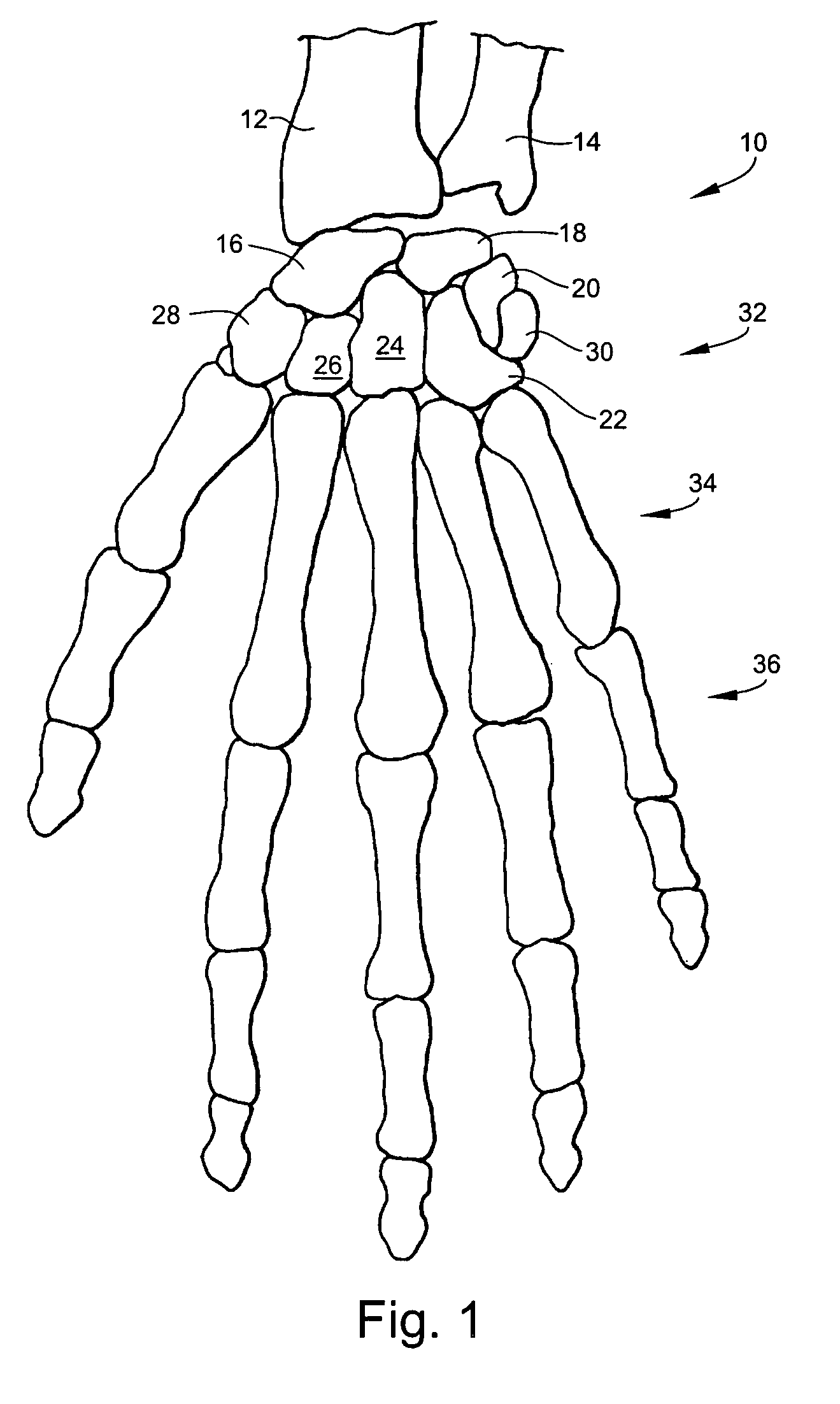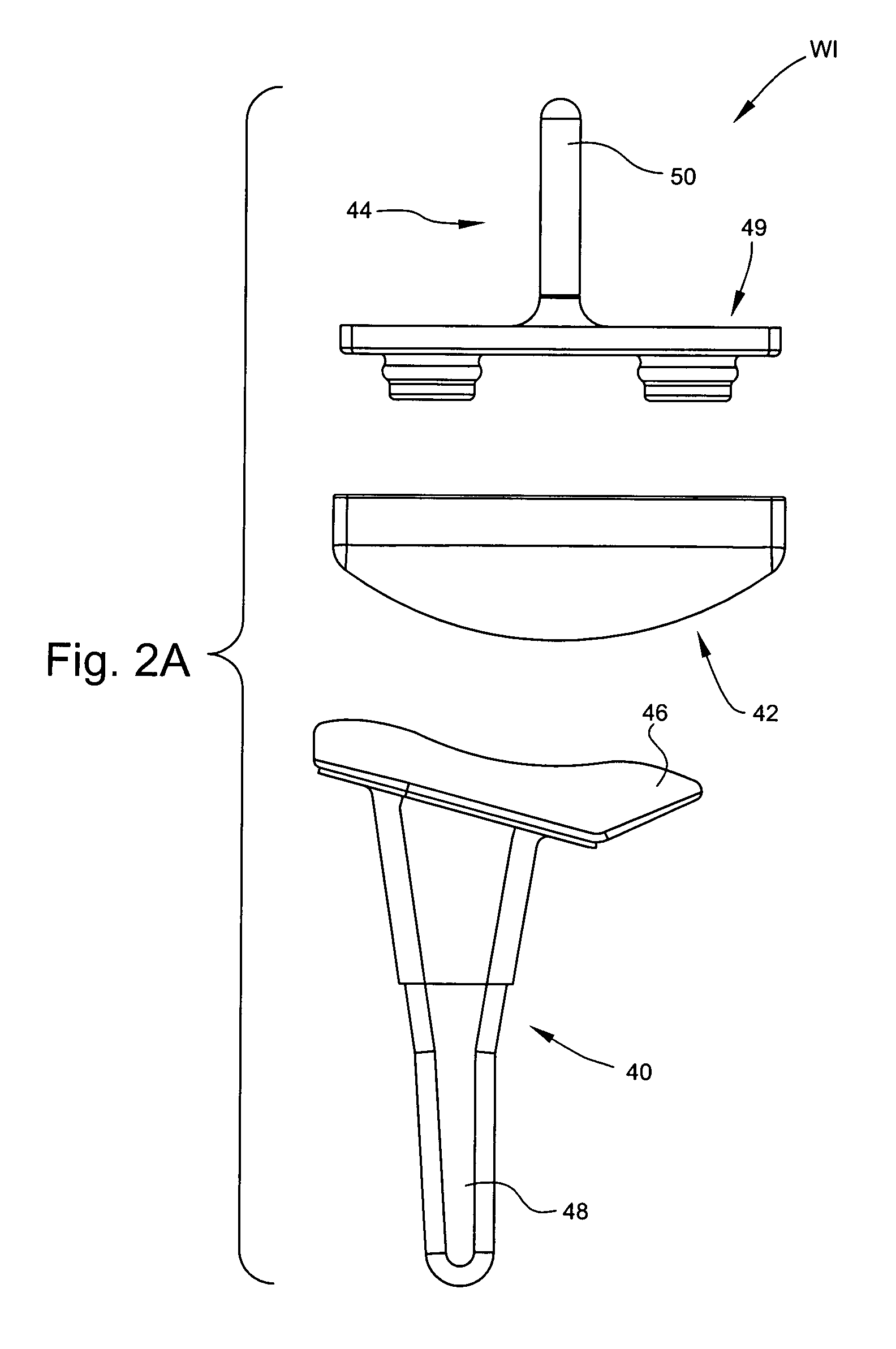Wrist implant apparatus and method
a wrist implant and wrist technology, applied in the field of wrist implant apparatuses and methods, can solve the problems of wrist implants that require excessive bone resection, less than satisfactory, and are more susceptible to post-operative fracture, so as to minimize future implant failure, and facilitate hand flexion and extension.
- Summary
- Abstract
- Description
- Claims
- Application Information
AI Technical Summary
Benefits of technology
Problems solved by technology
Method used
Image
Examples
Embodiment Construction
[0039]The present subject matter discloses prosthetic wrist implants and methods. The prosthetic wrist implants and methods disclosed herein minimize bone resection and allow natural articulation of the hand. An implant is utilized with a geometry that matches that of a natural wrist to afford a normal range of motion to the patient and also is designed to linearly engage and minimize future implant failure. An inclined articular surface of the radial component of each implant mimics the articulate surface of the distal radius bone. The small size and method of attachment of the implants minimize bone resection. The carpal component and bearing component are designed to linearly engage with the use of simple tools so that the bearing component can completely cover certain exposed portions of the carpal component, eliminating metal-on-metal contact between the radial component and the carpal component and minimizing future implant failure. The wrist implant may utilize screws, bone g...
PUM
 Login to View More
Login to View More Abstract
Description
Claims
Application Information
 Login to View More
Login to View More - R&D
- Intellectual Property
- Life Sciences
- Materials
- Tech Scout
- Unparalleled Data Quality
- Higher Quality Content
- 60% Fewer Hallucinations
Browse by: Latest US Patents, China's latest patents, Technical Efficacy Thesaurus, Application Domain, Technology Topic, Popular Technical Reports.
© 2025 PatSnap. All rights reserved.Legal|Privacy policy|Modern Slavery Act Transparency Statement|Sitemap|About US| Contact US: help@patsnap.com



